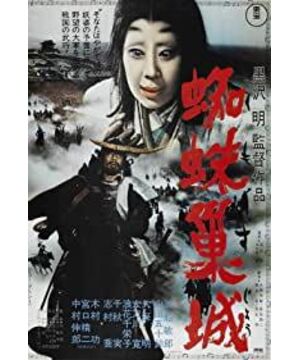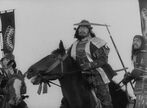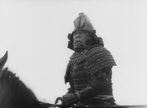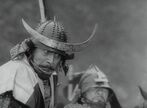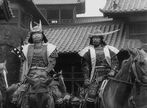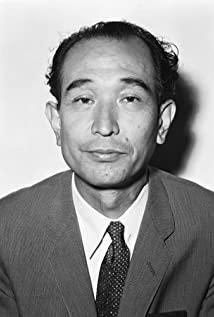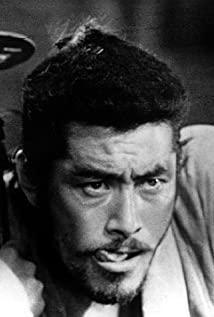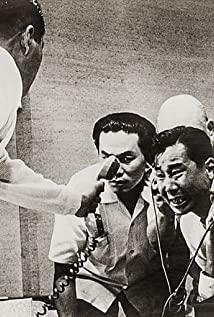Overview of Spider’s Nest :
Like most other films of Akira Kurosawa, "Spider’s Nest" has a wonderful story with twists and turns, a wonderful stage drama-style performance, a very beautiful movie language, especially a smooth mirror movement in the age of trees. As a major feature of him, the combination of Western drama adaptations and Japanese culture, the presence of a strong atmosphere, crows, fog, sound, etc., and always have some profound philosophies, the article analyzes the form of discourse and text ( Of course, they are inseparable in the movie).
Structure
Mr. Akira Kurosawa is a frequent visitor to the Oscars and is loved by European and American film critics. His film structure method also draws on many Western film principles. The script of "Macbeth" was directly used in the movie, but it became more cinematic. At the beginning of the movie, the landmark of the'Spider's Nest City' slowly appeared in a thick fog, and then slowly disappeared, everything is in one kind. It is carried out in a mysterious atmosphere. This mysterious atmosphere has always been permeated throughout the movie (it is very thick at the beginning). This method is Kurosawa Akira's best. In fact, in the origin of the whole story, "Spider's Nest" "Taking Shakespeare’s original story directly, from a banshee fable to Jijin’s wife persuading him to kill the lord, to instigating him to kill Miki and his son, to his own death (I don’t remember in "Macbeth" There is a paragraph in "Science" about a woman who is pregnant and giving birth to a stillbirth.) In fact, all the simple theatrical reasons Shakespeare has already been done, and Kurosawa has dealt with the "Japanese"-style results for everyone.
Here we can see a kind of "retribution" and "cause" in Japanese culture. The old city lord became the city lord because he killed his former lord, and he himself was killed by his next lord. They all went to the position of the city lord, (regardless of whether the previous city lord’s past is mentioned in Shakespeare's play, Kurosawa will deal with it this way). Justin became the lord of the city because he killed the lord, and was killed because of this fact. Justin’s wife killed the old city lord, Miki, almost Miki’s son, and lost her son, and Miki was killed. However, his son won the city lord without a single soldier. In short, we see a strong "causal" relationship here, which is the basic principle of building the story, but here, why does Kurosawa need to add all these characters? I want to come because of his aesthetic considerations.
Camera language
Starting from "Rashomon", Akira Kurosawa invented his "jungle" film linguistics. The smooth motion of the mirror in the complex woods is unique to him. Kurosawa Akira has his own way of constructing mysterious and complicated environments. It was the first time that Tsu and Miki met the enchantress when they lost their way in the spider-hand forest. The section was very beautiful, whether it was rain, fog, the branches of trees and The lines of the hut in the forest where women are spinning, there are also long shots like Mizoguchi learning (two people walk into the room and look back, the camera pulls back, the room is gone.), and the change of light, Mifune Toshiro’s In the performance, the use of human bone graves as a setting, a kind of paving for strange music, the use of panoramic shots, the direct placement of the characters and the environment, etc., the director used all modeling methods to create this kind of woods The mysterious atmosphere, we can also see in the character scheduling, the characters in this film always follow the same route, and come back in the past. The circle-like behavior is very suitable for the theme of the movie. In short, at the beginning of the movie, the director put a lot of effort into it. It laid the tone for the feeling of the whole story later (or, for the director, what the story is is not the most important, but the feeling of rushing towards you is the most cinematic intuition.)
The performance of horses, people's big scenes, in the seventh The control of horses in the warrior and the army in the shadow warrior are all shown in this film. These elements are very important in the film, because the director emphasizes the "feeling of form", such as the movement of the woods. , The actions of the troops, and so on.
The use of animals as a movie language is also very Japanese. The abnormal horses, the crows' calls, and the rat going out of the city are indispensable for the creation of a mysterious atmosphere as the function of a prophet.
The most exciting part is the last part where Jijin was shot to death by the rebels. It is also the best visually. Taking advantage of the characteristics of the building structure, Jijin has always been in a state of nowhere to retreat. (His back is always The corner, can only lean in the cracks), the arrow passes by him, more of the foreground, more like the paragraph in the jungle, the scene is getting closer and closer, here from the tall city lord to the full body Arrow's dead man walked to the ground, this kind of top-to-bottom scheduling is just the feeling of the end of the whole story. It seems that the director himself is quite pessimistic.
Drama in film
Starting at 28 minutes into the film, Jin Jin returned home to discuss with his wife that the enchantress met on the road said that she would be the lord of the city. Three of the conversations between Jin and the woman were indoors, and the three times the camera was used differently. The director's handling was very interesting. For the first time, the woman wanted to persuade the man to kill him, so she must kill the city lord first, and just heard the news that the city lord had come in a modest service. The man turned around and walked barefoot into the big empty house ( The ceremony of walking barefoot on the stage, Noh.) A woman sits in the room away from the camera, with a bright outdoor open space behind. The man walks to the woman and sits down. At this time, the woman is still in the depth of field, and the two people are facing the same direction of the camera. There are background sounds, horse barking, human voices and so on. The two people are far apart in the camera. (In the whole film, people and people are on the side of the camera, feeling pulled apart). When the woman talked, the man stood up anxiously, walked to the right, opposite the woman's eyes, and looked at the other side. Then, the man listened to the woman, while walking back and forth, listening to it, his face was exaggerated and complicated (this is a dramatic way of performance, and it’s not too much on the stage.), and then returned to the previous place. sit down. (Another stage schedule back to the original point.), suddenly turned around, the woman turned into the foreground, the position of the man began to shake, the man's eyes still turned away, then turned to talk to the woman, and then turned to the conversation, his expression follows the dialogue The progress is getting stronger and stronger. We don’t know how Akira Kurosawa works as an actor, but this kind of performance obviously belongs to the stage.
The second time, at night, the camera was shot overhead, and the point of perspective was placed in the lens. The characters and the background seemed to have a different perspective relationship, just like a German expressionist film. This way the man walked down from the height of the camera and looked at the woman talking. As if overwhelming the woman at the edge of the foreground, the man walked back and forth, back and forth.
The third time was also a character event, the biggest camera movement, and it was time to make a decision. The man walked from the right side of the cushion to the left, and then walked to the woman on the other side of the room. The two people looked in opposite directions. The woman stood up and walked back to the right side of the cushion together.
Especially the section of the cocktail party where the subordinates are invited is even more exciting. It adds the time and space changes caused by theatrical performance and the movement of the camera. It has a very special effect. In short, the indoor space of a Japanese house seems to be a stage. Almost all are based on Japanese drama.
View more about Throne of Blood reviews


